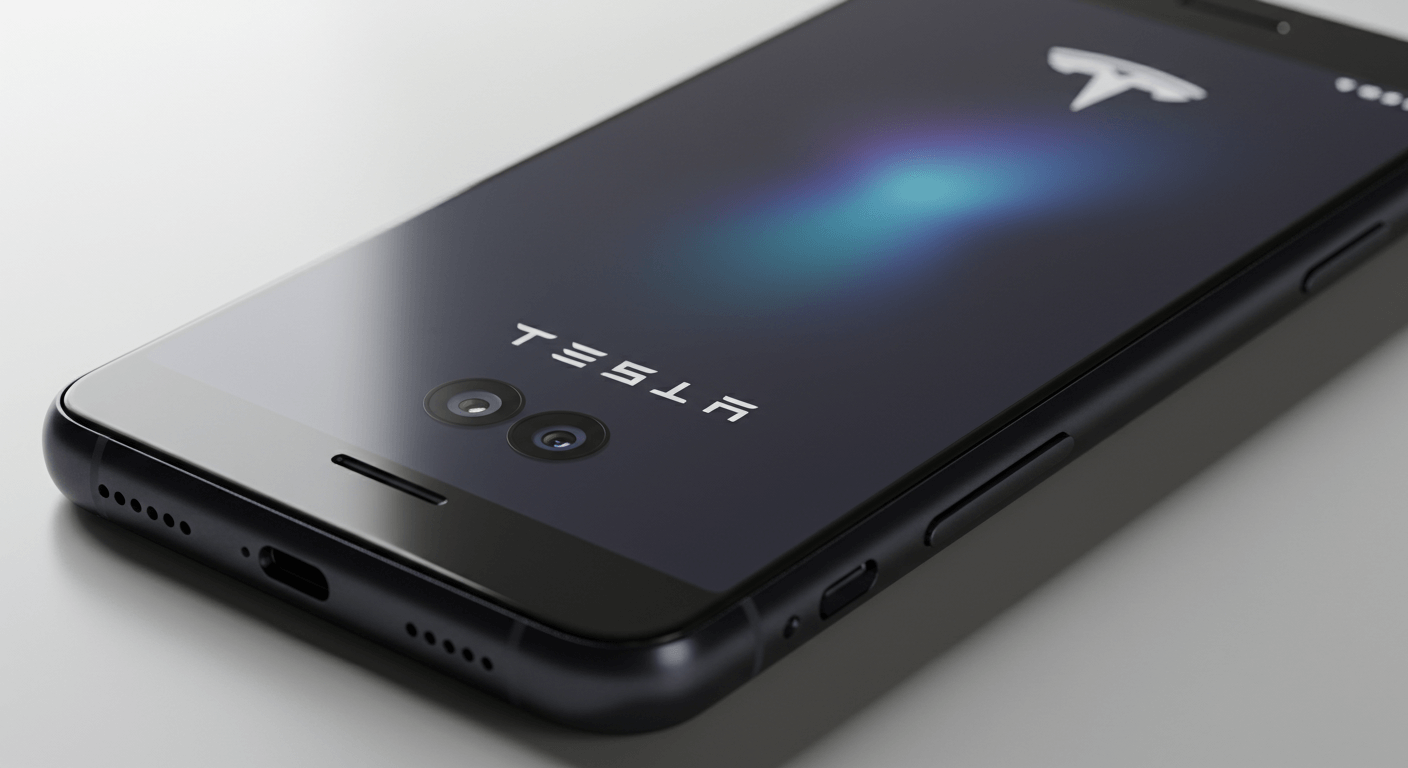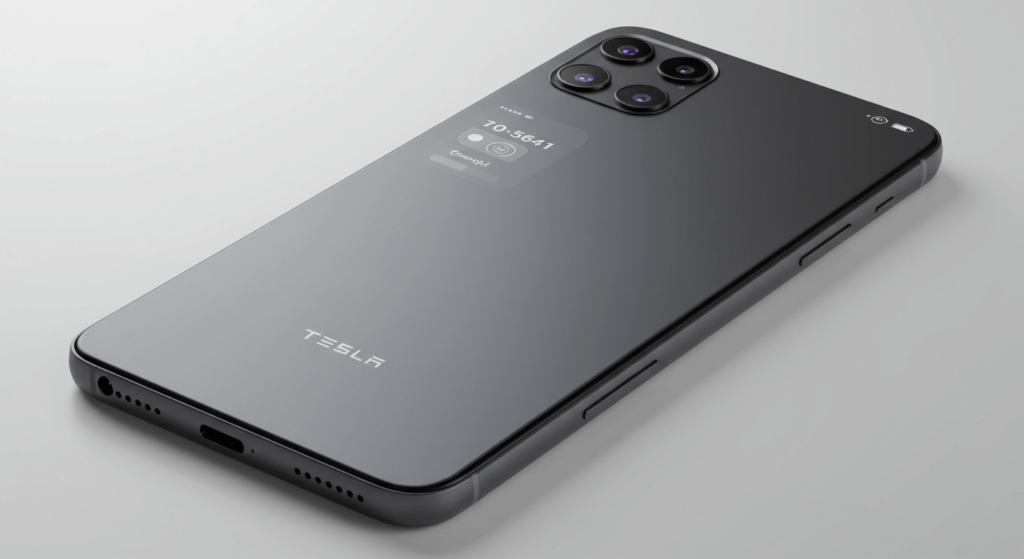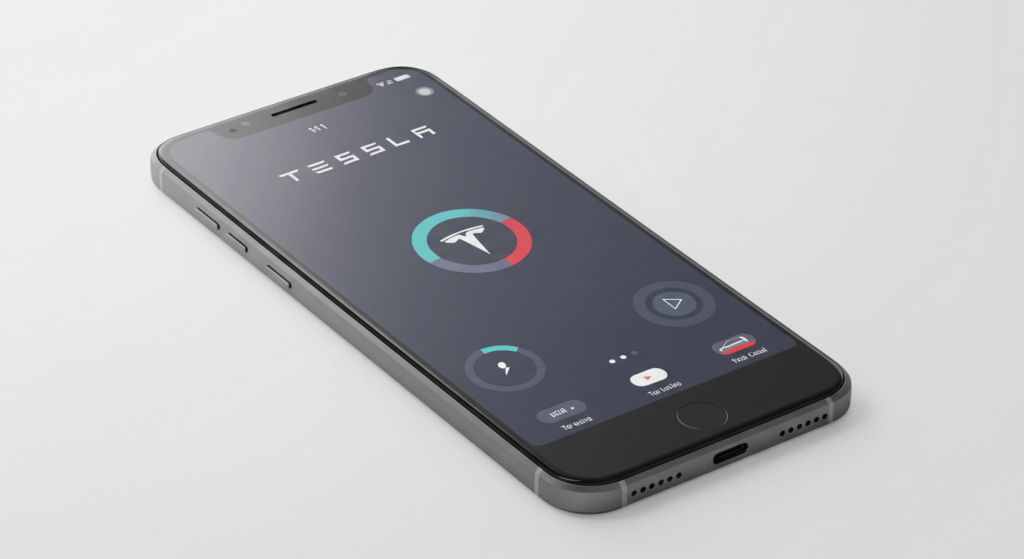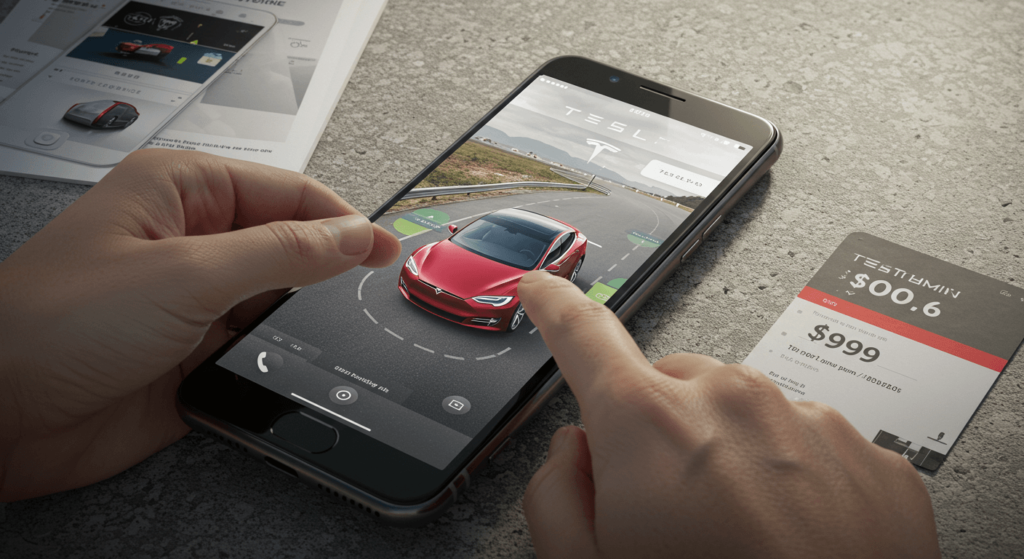Physical Address
304 North Cardinal St.
Dorchester Center, MA 02124
Physical Address
304 North Cardinal St.
Dorchester Center, MA 02124

The tech world is abuzz with rumors about the Tesla Phone, Elon Musk’s potential foray into the smartphone industry. Known for his groundbreaking work with Tesla, SpaceX, and Neuralink, Musk’s entry into the smartphone market could redefine how we interact with technology. But what exactly can we expect from this device, and how will it fit into Musk’s grand vision? Let’s explore.
The Tesla Phone is rumored to be a smartphone designed to integrate seamlessly with Tesla’s existing ecosystem, including electric vehicles, solar products, and even Starlink internet. Unlike traditional smartphones, this device could serve as a central hub for controlling various aspects of your Tesla-powered life.
Elon Musk is no stranger to innovation, and his potential entry into the smartphone market aligns with his vision of creating a connected, sustainable future. By launching a Tesla smartphone, Musk could offer a device that not only competes with Apple and Samsung but also enhances the functionality of Tesla’s other products.
Rumors about a Tesla smartphone, often referred to as the “Tesla Model Pi,” have circulated for years. While there is no official confirmation from Tesla or Elon Musk, speculation continues to grow. So, where does the project currently stand?
Tesla has not formally announced a smartphone, but industry insiders and tech enthusiasts believe Musk could enter the market. His frequent criticism of Apple and Google, combined with his push for technological independence, fuels speculation. Some concept designs and leaked reports suggest a futuristic device with deep Tesla and Starlink integration, though nothing has been confirmed.
Even if Tesla were developing a phone, the road ahead would be complex. Competing against established giants like Apple and Samsung would require massive investment and innovation. However, Tesla’s expertise in AI, battery technology, and connectivity could give it an edge. A phone that seamlessly connects with Tesla vehicles, leverages Starlink for global internet access, and aligns with Musk’s vision of an open digital ecosystem could attract a dedicated audience.
While the Tesla phone remains a mystery, the idea aligns with Musk’s disruptive approach. Whether it becomes a reality or remains speculation, the industry is watching closely.

The Tesla Phone is expected to feature a sleek, futuristic design inspired by Tesla’s electric vehicles. Rumors suggest the use of sustainable materials, aligning with Tesla’s commitment to environmental responsibility.
One of the most exciting aspects of the Tesla Phone is its potential integration with Neuralink, Musk’s brain-computer interface project. This could enable advanced AI features, such as voice control and predictive texting. Additionally, the phone might leverage Starlink for global satellite internet connectivity, ensuring seamless online access even in remote areas. Another standout feature could be solar charging, allowing users to harness renewable energy to power their devices.
Under the hood, the Tesla Phone is expected to boast top-tier hardware. Early speculations point to a high-performance processor, ample RAM, and a long-lasting battery with fast-charging capabilities. The camera system is also rumored to rival flagship devices from Apple and Samsung.

When compared to the iPhone, the Tesla Phone could offer deeper integration with Tesla’s ecosystem. For example, users might be able to control their Tesla car or home energy systems directly from their phone. This level of connectivity could give it an edge over Apple’s tightly knit but limited ecosystem.
If Tesla were to launch a smartphone, it would inevitably be compared to existing Android devices. Given Tesla’s reputation for innovation, how would a potential “Tesla Phone” stack up against the competition?
Unlike traditional Android devices, a Tesla Phone would likely be deeply integrated with Musk’s ecosystem, including Tesla cars, Starlink satellites, and possibly Neuralink technology. Imagine a phone that offers direct satellite connectivity via Starlink, eliminating the need for traditional mobile networks, or seamless Tesla vehicle control beyond what current smartphone apps allow. These features could make it stand out from standard Android phones, which rely on existing carriers and fragmented manufacturer ecosystems.
While Android devices come in various designs, a Tesla Phone could adopt a unique approach, potentially featuring a custom operating system rather than standard Android. This could give Musk more control over security, privacy, and app distribution, reducing reliance on Google’s Play Store. However, this strategy could also pose challenges, such as app availability and ecosystem adoption. Tesla’s expertise in AI and energy-efficient technology might also lead to innovations in battery life and performance, differentiating it from mainstream Android flagships.
A Tesla Phone would need to offer more than just another Android alternative—it would have to redefine the smartphone experience to compete in an already saturated market.
The Tesla Phone is expected to be a premium device, with a price tag that reflects its advanced features. Its target audience will likely include tech enthusiasts, Tesla owners, and early adopters who are willing to pay for cutting-edge innovation.

A Tesla Phone would likely be designed to work seamlessly within Tesla’s expanding ecosystem, offering a level of integration beyond what current smartphones provide. This could create a unique experience for Tesla owners and tech enthusiasts alike.
One of the biggest advantages of a Tesla Phone would be its ability to control and interact with Tesla vehicles more efficiently. While Tesla’s mobile app already allows users to unlock doors, control climate settings, and monitor charging, a Tesla Phone could take this further with built-in AI automation, ultra-fast connectivity, and deeper integration with Tesla’s in-car systems. Features like biometric authentication for vehicle access, voice commands optimized for Tesla AI, and exclusive performance monitoring tools could make it an essential companion for Tesla owners.
Another potential game-changer is Starlink integration. Unlike traditional smartphones that rely on cellular carriers, a Tesla Phone could leverage SpaceX’s Starlink satellite network for global internet coverage. This could enable users to stay connected even in remote locations, bypassing traditional carrier limitations. For Tesla drivers, this would mean reliable navigation, real-time updates, and streaming services regardless of location, making road trips and off-grid travel more accessible.
By tightly integrating with Tesla’s ecosystem, a Tesla could offer phone market a seamless, high-tech experience that goes beyond what’s currently available on the market.
The Tesla Phone could disrupt the smartphone market by offering features that go beyond traditional devices. Its integration with Neuralink and Starlink could pave the way for a new era of connected technology.
Despite its potential, the Tesla Phone faces several challenges. Manufacturing and supply chain issues could delay its launch, while competition from established brands like Apple and Samsung could make it difficult to gain market share.
The Tesla represents Elon Musk’s ambitious vision for the future of technology. With its potential integration with Tesla’s ecosystem, cutting-edge features, and focus on sustainability, it could be a game-changer in the smartphone industry. However, only time will tell if it lives up to the hype. What are your thoughts on the Tesla Phone? Share your opinions in the comments below!